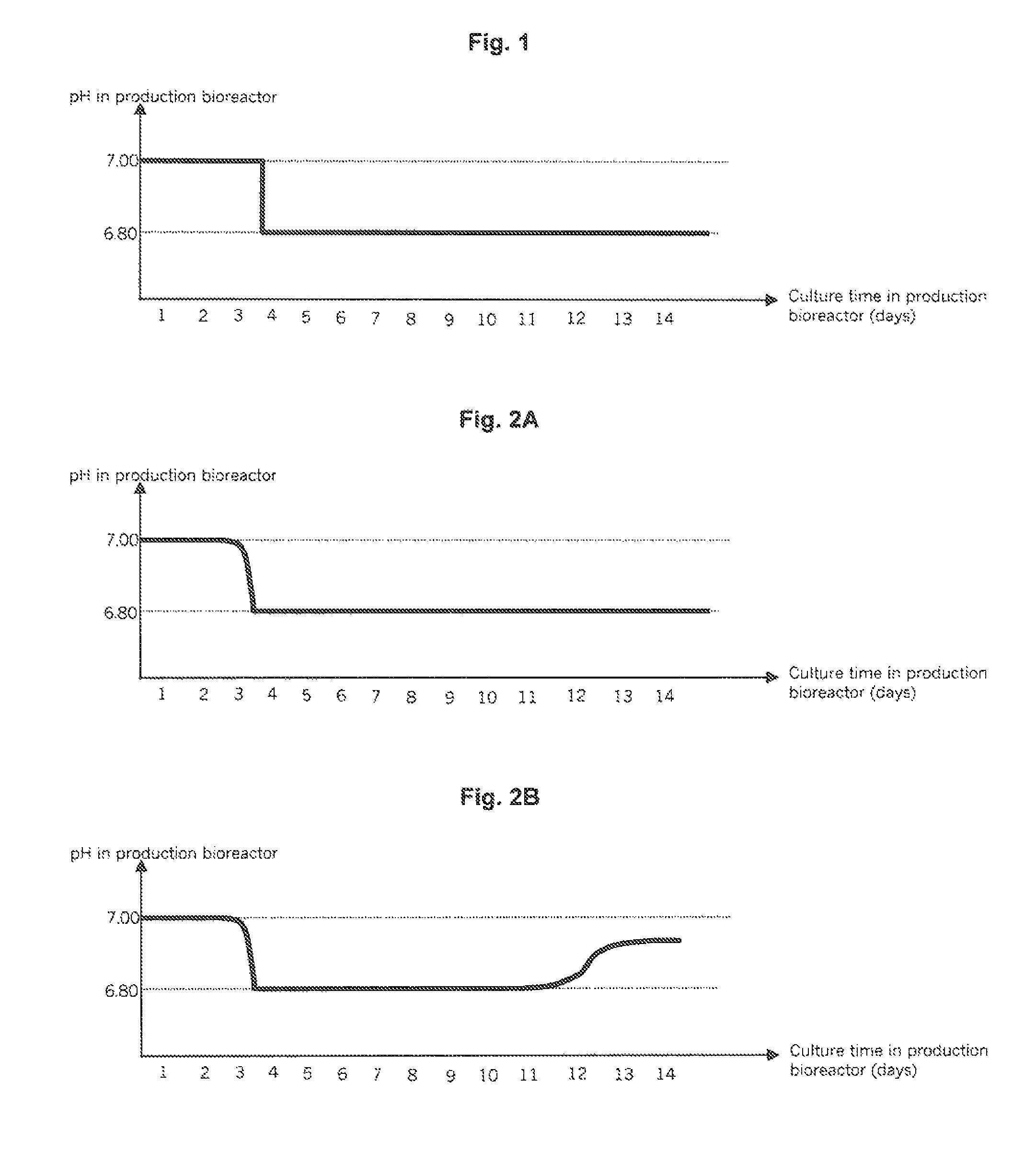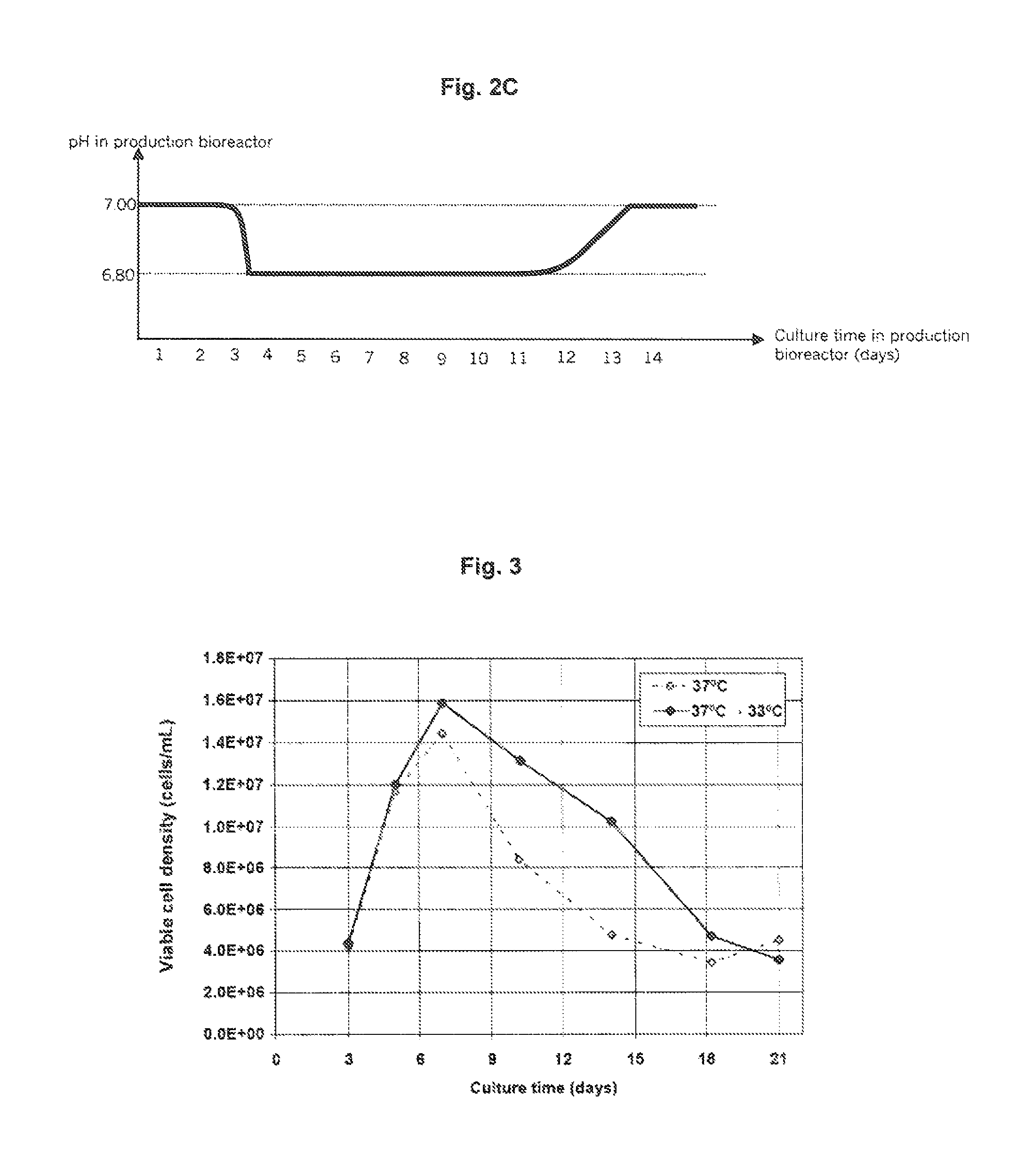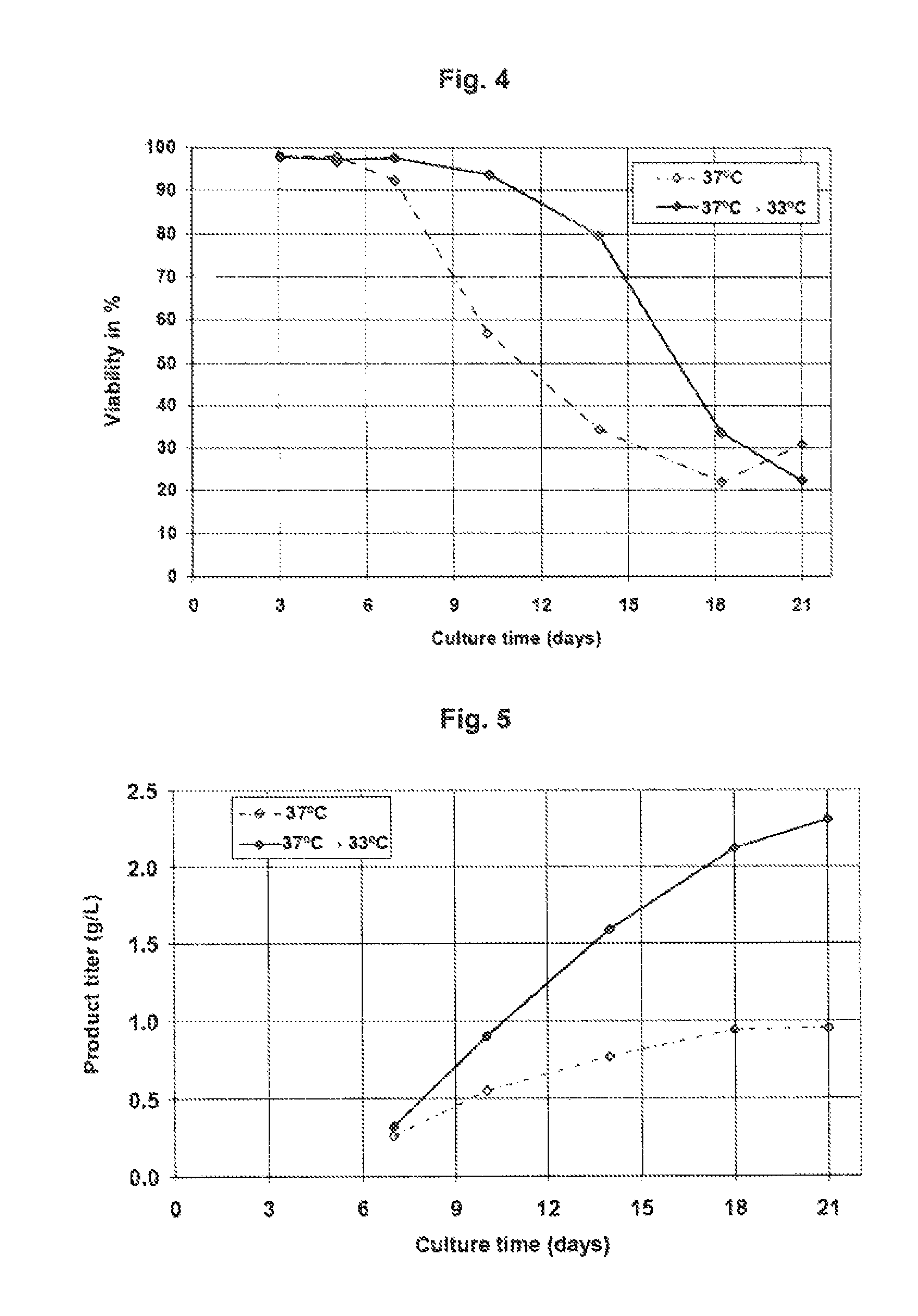Cell cultivation process
a cell culture and cell technology, applied in the field of biotechnology, can solve the problems of reducing ph, affecting the culture, and ph shift in high glucose media, so as to improve the product quality of recombinantly produced polypeptides, and increase cell productivity
- Summary
- Abstract
- Description
- Claims
- Application Information
AI Technical Summary
Benefits of technology
Problems solved by technology
Method used
Image
Examples
example 1
[0107]In Example 1 two shake flask cultures containing medium 1 are inoculated in parallel with a mAb1-producing CHO clone. The shake flask cultures are incubated in a carbon dioxide incubator at 37° C. On day 3, one shake flask is transferred to a carbon dioxide incubator set at 33° C. Both shake flasks are similarly fed with two feed solutions. Feed was supplemented according to a fixed schedule, with addition of 0.4% of the first feed solution (Table 2) and 2% of the second feed (Table 3) per day starting on day 5 and lasting until the end of the culture.
[0108]The temperature shift to 33° C. enables longer maintenance of the viable cell density and viability of the culture with time (FIGS. 3 and 4) and the achievement of a higher product titer (FIG. 5), compared to the culture that is maintained at 37° C. for the whole duration of the experiment. This example illustrates the benefit of implementing a temperature shift to 33° C. during a cell culture production process based on a ...
example 2
[0109]In this example, a 300-L bioreactor containing medium 2 is inoculated with a mAb2-producing CHO clone. On day 5, the temperature of the bioreactor is shifted from 36.5° C. to 33° C. The pH setpoint is 6.90 and the deadband is 0.10. As a result, the culture starts at pH 7.00, the pH drifts down to 6.80 between day 2 and day 4, and then progressively returns to 7.00 due to lactic acid consumption by the cells (FIG. 6). The shift to pH 6.80 enables to reduce the addition of base compared to a scenario with a constant pH 7.00. The return to pH 7.00 enables to reduce the concentration of CO2 in the medium compared to a scenario where the pH is left at 6.80 after the first shift. In this process that combines temperature and pH shifts, a high viable cell density is reached and the decrease in viable cell density over time is minimized (FIG. 7), allowing to reach on day 14 a high titer (FIG. 8) of product of adequate quality. Feeding is applied similarly as in Example 1.
example 3
[0110]in this example, three independent fed-batch cultivation processes are carried out in a glass bioreactor using a mAb3-producing CHO cell clone and medium 2 (see Table 1). The feed scheme of Example 1 is applied again. Two independent cultivations include a temperature shift without an additional pH shift, i.e. the pH in both cell cultures is maintained at a value of pH 7.0 over the whole length of the cultivation. The third cultivation experiment differs from the first two experiments by an additional pH shift from pH 7.0 to pH 6.8 applied at day 3 of cultivation. The temperature shift carried out in all three experiments occurred at a cell density of 4-6×106 viable cells / ml, respectively. In FIG. 9, the mAb3 concentration obtained as the expression product from the corresponding CHO clone is depicted as a function of the integral of viable cells (IVC) which is an integral of all living cells calculated from the cell concentration / ml VCD in a millilitre cell culture. The incli...
PUM
| Property | Measurement | Unit |
|---|---|---|
| temperature | aaaaa | aaaaa |
| temperature | aaaaa | aaaaa |
| temperature | aaaaa | aaaaa |
Abstract
Description
Claims
Application Information
 Login to View More
Login to View More - R&D
- Intellectual Property
- Life Sciences
- Materials
- Tech Scout
- Unparalleled Data Quality
- Higher Quality Content
- 60% Fewer Hallucinations
Browse by: Latest US Patents, China's latest patents, Technical Efficacy Thesaurus, Application Domain, Technology Topic, Popular Technical Reports.
© 2025 PatSnap. All rights reserved.Legal|Privacy policy|Modern Slavery Act Transparency Statement|Sitemap|About US| Contact US: help@patsnap.com



